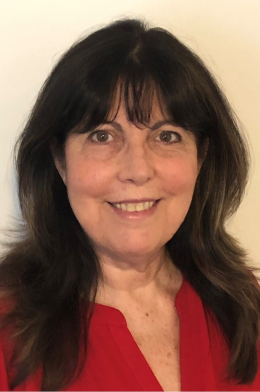The 4th Annual MarketsandMarkets Next-Gen Bioprocessing Conference on the 20th & 21st of October 2022 aims to delve deep into defining trends & innovation withing the bioprocessing ecosystem around major domains like cell culture & bioproduction, downstream processing & continuous biomanufacturing and cell and gene therapy analytics.
Just under 12 weeks remain till we go LIVE in Boston with over 100+ attendees, in-depth case studies, various networking sessions & keynote presentations from 15+ leading industry experts.
We’re tremendously excited to hear the speakers’ ideas, findings & foresight into the future. In the meantime, here’s what Rachel Legmann (Senior Director of Technology, Gene Therapy) at Repligen, had to say:
1. What are the recent advances in cell and gene therapy and current challenges that need immediate attention ?
- After decades of relentless scientific efforts, gene and cell therapy, whose promise was envisioned for decades, now fuel the next step change of the therapeutic landscape, opening entirely new routes towards previously un-addressable disease states. Approvals across multiple therapeutic types now include Maci, Kymriah, Yescarta and Tecartus for cell therapies and Luxturna and Zolgensma® for in vivo gene therapies. Together, this set of therapies has catalyzed the initiation of hundreds of clinical trials that will surely herald the arrival of more successful treatments within the next decade. Luxturna, which addresses retinal dystrophy, and Zolgensma®, which addresses spinal muscular atrophy, represent breakthrough therapies with important, but small, patient numbers. As gene therapies mature, more common diseases, such as solid tumor cancers, will emerge with far greater patient numbers. While already approved gene therapies meet important unmet therapeutic needs for a small patient population and with low dosage required at early clinical phase, the new gene therapies currently being developed will address larger patient population and/or using higher dosage needed for global clinical and commercialization. The manufacturing processes for viral vectors used for the approved treatments were developed in research laboratories with technologies not suitable for large-scale industrialization. Manufacturing improvement is therefore needed to realize the full potential of gene therapy.
- One of the major challenges in the GT is capacity, the viral vector supply is not meeting the high demand required to treat many indications due to sub-optimal manufacturing process used for very complex products. The productivity yield and the recovery yield are low. When we zoom into the manufacturing process steps the challenges start with the high volume of the seed train (N-1) used for inoculating the production bioreactor due to low HEK293 cell density, In the production bioreactor (N) the production is low due to low HEK293 cell density at time of transfection.
- Another challenge is scalability due to the nature of the viral vector production process using transient transfection as the expression system, AAV product is associated with the cells therefore the culture need to go through lysis process feeding the downstream with high turbidity, viscosity and non-product related impurities creating challenges for the downstream steps. Additional overall challenges are process cost, complexity, and risk for other viral contamination since the final vector product can’t go through viral clearance step.
2. What are the key take away points from your presentation topic which will help in building the knowledge base of attendees ?
- To leverage the clear and vast potential of gene
and cell therapies for common disease states, manufacturing processes need to
augment both productivity and efficiency. Early manufacturing processes were
developed in research labs with technologies not designed for industrial scale-up.
Significant technical developments that increase productivity and efficiency
are immediately required to meet current demands and then fuel future endeavours.
- This talk summarizes a select number of GTM 1.0
challenges and outlines potential Gene Therapy Manufacturing 2.0 (GTM 2.0)
productivity, scalability, and safety improvements.
- TFDF (Tangential Flow Depth Filtration)
technology unites the benefits of tangential flow and depth filtration is a
game changer technology enabling to intensify the vector production yield
through perfusion and clarification for all gene therapy modalities,
lentivirus, AAV, adenovirus, exosome etc.
- This Innovative scalable technology provides an alternative to centrifugation and primary depth filters in a smaller footprint, reduced cost and in a rapid process time.
SPEAKER BACKGROUND :
Rachel has more than 25 years of experience in the field of scalable biologics and gene therapy manufacturing of therapeutic products, viral vectors and proteins for gene therapy and biologics. She completed her Ph.D. in Food Engineering and Biotechnology at the Technion-Israel Institute of Technology, Israel. Rachel joined Repligen in 2021 as a subject matter expert leading the global gene therapy organization helping customers achieve their technical and operational objectives in their manufacturing of vector-based therapeutics and vaccines with a focus on gene therapy processes including upstream, downstream, analytics and scalability. In addition to supporting global customers and building high level networks, Rachel is supporting various internal cross-functional activities and external collaborations. Prior to joining Repligen, Rachel held several scientific and leadership roles at Microbiology & Molecular Genetics department at Harvard Medical School, CRO SBH Sciences, Seahorse Biosciences part of Agilent, CDMO Goodwin Biotechnology and Pall Corp part of Danaher.

EXPLORE THE CONFERENCE!
CLICK HERE TO REGISTER!
Keep an eye out on this space for more excerpts from leading experts sharing their outlook on the latest innovations, challenges & the path forward!
Ayush Kanitkar
MarketsandMarkets
+91-8975985061





